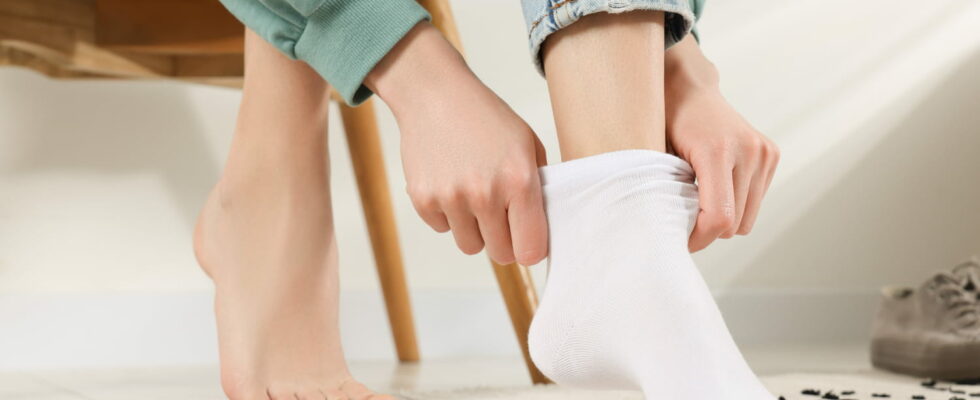All you need is a pair of socks and a pair of shoes.
As we age, we tend to become more sedentary, stiffer and lose mobility, which affects the ability to move around and carry out simple daily tasks and increases the risk of falls. To quickly measure your stability and your level of balance, Chris Hinshaw, internationally renowned sports trainer, has developed an exercise that has now gone viral, to be done without delay from the age of fifty.
Validated by physiotherapists and osteopaths, this exercise called “Old man test” or more simply “the sock test” is very easy to do and requires no equipment apart from a pair of socks and a pair of sneakers. “This is an excellent test which will test a lot of specific elements such as one’s balance, one’s ability to stay on one leg for a few seconds and also to make movements when one bends the knee. This allows you to work on the ankle-knee-hip-pelvis quartet, extremely important as you get older, but also your strength and stability.“, comments HemtonKiné, physiotherapist and sports osteopath on his account Instagram.
The principle is as follows: balance on your right leg, lean over, making sure to keep your back straight, take a sock and put it on your left foot, then take the shoe and put it on, while remaining in position. balance on one leg (the left foot should not touch the ground until the sneaker is completely on). Then switch sides and repeat these same steps with the other leg. The test is passed if the foot does not touch the ground. On the other hand, it is considered “failed” if there is a need to place the foot on the ground at any given moment (except of course, when you change legs in the middle of the exercise). Perform this test in a safe space, away from objects you might hit if you wobble or tip forward, and stand on a stable, clear surface with a wall nearby.
This test can also help predict one’s risk of dying prematurely. In a study published in the British Journal of Sports Medicine, Finnish researchers asked 1,700 people aged 51 to 75 (68% were men) to perform a one-legged balance pose (similar to the Old man test) for 10 seconds. People who failed to hold the posture (20% of participants) had an 84% increased risk of death from all causes over the next 10 years compared to people who passed the test. They were also more likely to develop risk factors for cardiovascular disease such as high blood pressure, type 2 diabetes or obesity.
“Our ability to maintain balance reflects all of the interconnected systems that are necessary to effectively process the experience of standing. So we can use balance as a “wake-up call” that something else may be going on. This helps us assess risks and implement strategies to reduce them“, comment the researchers.
According to the researchers, people who fail this test should do more dynamic balance exercises like climbing stairs, walking only on heels or toes, and practicing yoga or dancing at least once or twice a week.
